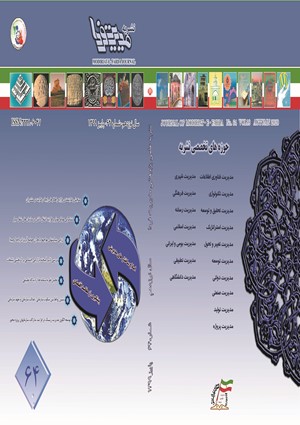-
-
List of Articles
-
Open Access Article
1 - The Effect of the Green human Resource Management on the Social Legitimacy with Mediating Role of social responsibility (Esfahan,s Mobarakeh Steel Company as a Case Study)
mojtaba farrokhi ali nasr esfahani ali safari -
Open Access Article
2 - Performance Evaluation Of Guilan Private Hospitals Using BSC Approach and ANP Method
-
Open Access Article
3 - (Evaluation of the effect of employees' psychological well-being on motivating the employees to innovate in the company (Research in Petrochemical companies of Bushehr Province
Nasim Beheshtkhoo fakhrieh Hamidianpour Majid Esmaeilpour -
Open Access Article
4 - The Effectiveness of Effective Factors on the Effectiveness of E-Learning and Interaction in Organizational Training
Masoomeh Kebriaee -
Open Access Article
5 - Proposing a Framework for Modifying and Improving Processes Using the Combination of QFD Approach and Multi-criteria Decision Making Based on BPMN.2 Standard
Reza Abasi samane ghiasi saeed safari -
Open Access Article
6 - Life cycle of the Tehran air pollution control project: an stakeholder analysis approach
mojtaba dashti meysam shahbazi Adel Azar mohammadhasan maleki -
Open Access Article
7 - Explaining productive organizational energy using force field analysis
علیرضا حسین بیگی Saiedeh Nosratabadi Abbas Shoul Hossein Arman -
Open Access Article
8 - An Introduction to the Production of Islamic Knowledge
Mostafa Jafarpishe محمد سعید جبل عاملی -
Open Access Article
9 - Optimization in Layout Design Problems by Designing a Complex Integer Linear Model
Ahmad jafarnezhad chaghoshi iman Abbasi Mohamad Reza Mehregan -
Open Access Article
10 - Assessing the impact of passion on social media on intention of revisit tourists with a mediating role of customer interaction with customer (Case study: Tourists of Isfahan city)
Yazdan Shirmohammadi Ramadan Gholami Awati Maryam Mohammadi Moghaddam -
Open Access Article
11 - Game Theory in Selecting Strategic allies based on Innovation Strategy in ICT
Fatemeh Hajesmaeilian hooshang Nezamivand Chegini Tahmours Hasangholi Pouryasouri -
Open Access Article
12 - (Identify the Factors Which Are Affecting to Exploit the International Entrepereuniral Opportunities in Energy Supply Businesses (Case of Study: National Iranian Gas Company
amirhooshang karami Seyed Mojtaba Sajjadi Seyedreza Hejazi asgar khademvatani -
Open Access Article
13 - A dynamic model of the impact of information and communication technology on GDP growth
mohammad taghi taghavi fard melika mehrkam Esfandiar Jahangard Ameneh Khadivar -
Open Access Article
14 - Investigating a model of implementation and development business intelligence in organization with the purpose of improving decision-making
Payam Yaghli -
Open Access Article
15 - Investigating the function of symbolism in corporate branding
maboud abbaszade Seyed mohammad tabatabaeenasab -
Open Access Article
16 - Identifying the Influential Factors on the Innovation Culture Based on the Exploratory Blend Approach
Alireza Aliahmadi nahid saravi-moghadam -
Open Access Article
17 - Investigating the role of social undermining in the Workplace Bullying and Violation of psychological contracts
akbar bahmani
-
The rights to this website are owned by the Raimag Press Management System.
Copyright © 2017-2025







